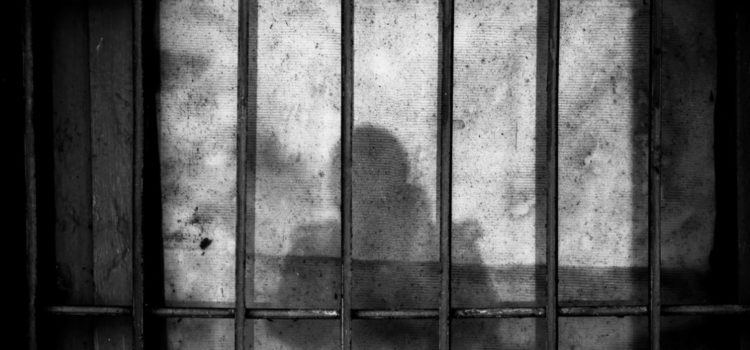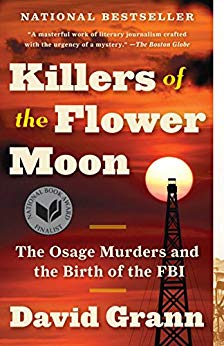

This article is an excerpt from the Shortform summary of "Killers of the Flower Moon" by David Grann. Shortform has the world's best summaries of books you should be reading.
Like this article? Sign up for a free trial here .
Who was Blackie Thompson? How did he help solve the Osage murders?
Blackie Thompson was a bank robber who was recruited as an informant for the FBI to work on the Osage murder cases. While his work as an informant initially failed, he ultimately provided information that led to a break in the case.
Read more to learn about this intriguing figure in American history.
Blackie Thompson: Failed FBI Informant
To set the scene for Blackie Thompson’s story, we have to understand the Osage Reign of Terror. By 1923, two years after the Osage murders began, 24 lay dead. Even the local justice of the peace and the county sheriff were terrified, and they refused to open up new inquests into the murders. The campaign of terror looked to have won a complete victory over the forces of law and order.
By now, it was clear to the Osage that the local authorities were totally unable to deal with the situation. In 1923, the Tribal Council drafted a written appeal to U.S. Senator Charles Curtis, who was himself part-Osage.
(Shortform note: Charles Curtis would later serve one term as Vice President of the United States under President Herbert Hoover. He is, to date, the only person of Native American ancestry to hold the office.)
Eventually, the Bureau of Investigation, a then-obscure branch of the federal Department of Justice, sent agents into Osage County to investigate the ongoing slaughter. The Bureau, outrageously, charged the tribe $20,000 for its services—$300,000 in today’s money. Even worse, they badly bungled the case when they released from prison a convicted bank robber named Blackie Thompson, who they hoped would help the investigation by working as an undercover informant. Unfortunately, Blackie went on a crime spree upon his release, robbing a bank and killing a police officer, offenses for which he was captured and re-imprisoned.
The entire ordeal was another failure of law enforcement in Osage County, and a fiasco for the Bureau. It seemed there was little hope of justice for the Osage.
Blackie Thompson Helps Solve the Case
In his quest to shore up the case, Tom White turned to the man who had caused so much grief and embarrassment for the Bureau during its original investigation: the outlaw Blackie Thompson. Blackie Thompson had been released from prison by the Bureau in 1923 to work undercover and help solve the Osage murders. Instead, Blackie had gone on a criminal rampage, robbing a bank and slaying a police officer. By 1926, he was back in prison.
But White suspected that, for all his misdeeds and the Bureau’s disastrous bungling, Blackie really did have valuable information. So he arranged to have Blackie transferred to the federal prison in Guthrie, Oklahoma where he could be interrogated. White’s team told Blackie that his cooperation would not result in any reduction of his current prison sentence—thus, eliminating much of the convict’s incentive to lie. Upon questioning, Blackie revealed to federal agents that Hale and Burkhart had engaged him and the now-deceased Curley Johnson to murder Bill and Rita Smith. The only reason Blackie had never gone through with it was that he had been arrested and imprisoned for car theft before he had the chance to participate in the plot.
The agents used Blackie Thompson’s account to break Ernest Burkhart. They dramatically brought the two together in a room at the jail where Burkhart was being held, where Blackie told Ernest that he had shared everything he knew with the agents. Ernest was clearly scared and defeated. He finally confessed to Tom White, admitting that Hale had tasked him with recruiting the operatives to blow up the Smith house. Burkhart said that Asa Kirby (recruited through the bootlegger Henry Grammer) had actually made the bomb and ignited the fuse, not Burt Lawson—Lawson, like so many jailhouse informants throughout the case, likely in the hopes of getting his sentence reduced. He also revealed that Hale had traveled with Grammer to Texas on the day of the bombing, with the express purpose of manufacturing an alibi.
Ernest also linked Hale directly to the murder of Henry Roan, stating that a contract killer named John Ramsey (another associate of Grammer) had been hired to kill him. Agents in the field immediately apprehended Ramsey, brought him into custody, and presented him with Burkhart’s signed confession. Ramsey, in turn, confessed to getting Roan drunk and shooting him in the back of the head.
Ernest, finally, gave key information about the murder of Anna Brown. He said that the mysterious “third man” spotted with Anna and his brother, Bryan Burkhart, on the last night Anna was seen alive was Kelsie Morrison—a man who was later engaged by the Bureau to work as an undercover operative. Ernest said that Morrison was, in fact, the man who had put the bullet in Anna Brown. All the awful pieces of the puzzle were finally coming together.
With her own husband now an admitted party to a plot to murder her entire family, Mollie Burkhart’s life was clearly in danger. She was moved to a hospital in Pawhuska. Once she was away from her husband and his family (and the duplicitous Shoun brothers), her condition markedly improved. Tom White’s team hauled the Shoun brothers in for questioning. But neither man admitted to knowing anything about the murders and both denied administering poison to Mollie. Mollie herself could not accept the idea that her own husband was a key player in the murder of her sisters.
Blackie Thompson was able to provide insider knowledge to the FBI that helped lead to Ernest Burkhart’s confession, and later, his turning on his uncle and revealing the conspiracy. Despite the initial failure, Blackie Thompson proved useful to the case.

———End of Preview———
Like what you just read? Read the rest of the world's best summary of David Grann's "Killers of the Flower Moon" at Shortform .
Here's what you'll find in our full Killers of the Flower Moon summary :
- How the Osage tribe had vast oil wealth, but had it seized by their murderous neighbors
- The brutal and unresolved murders of Osage Native Americans
- The complicated history of the FBI in profiting from the Osage murders






